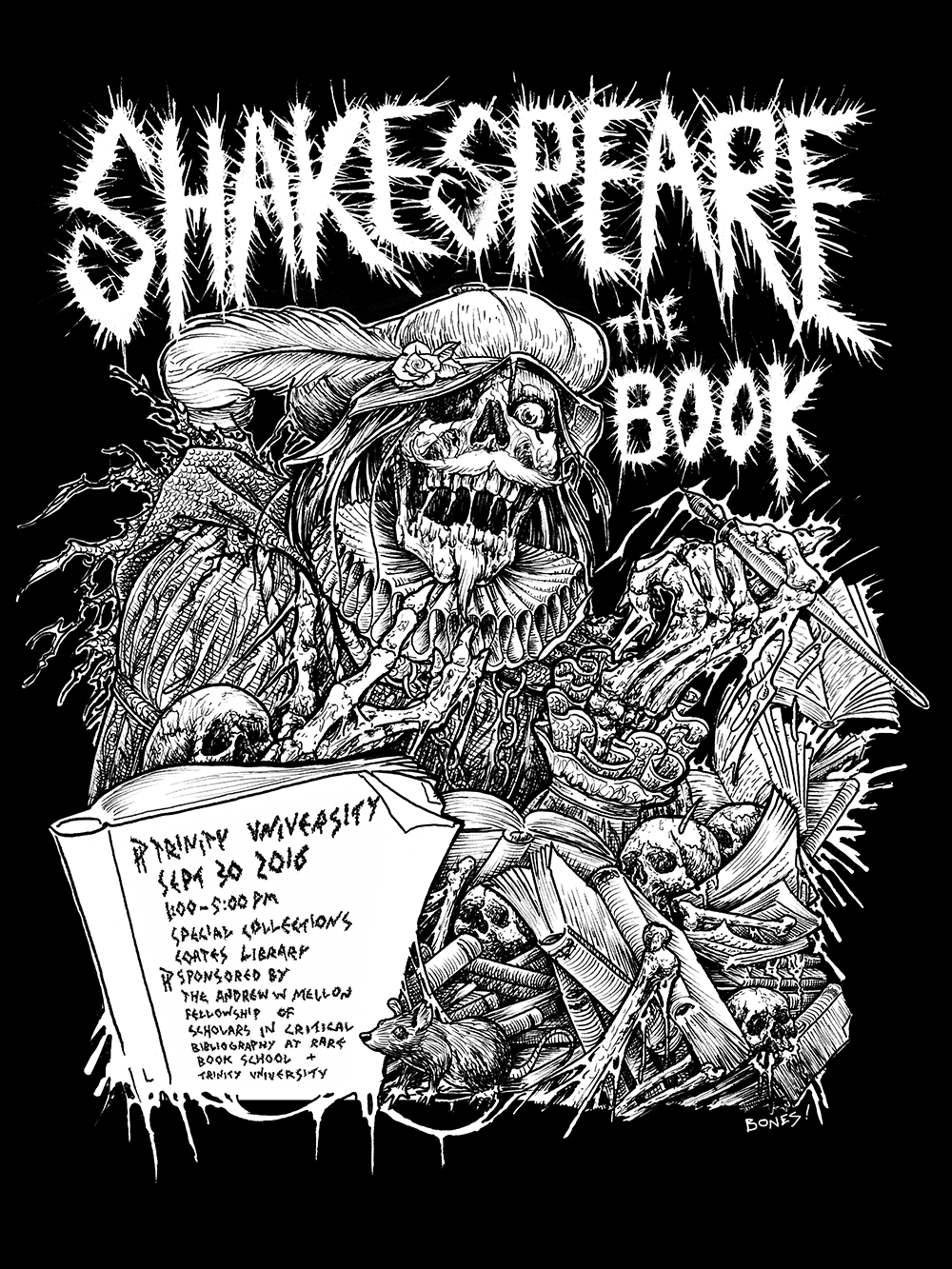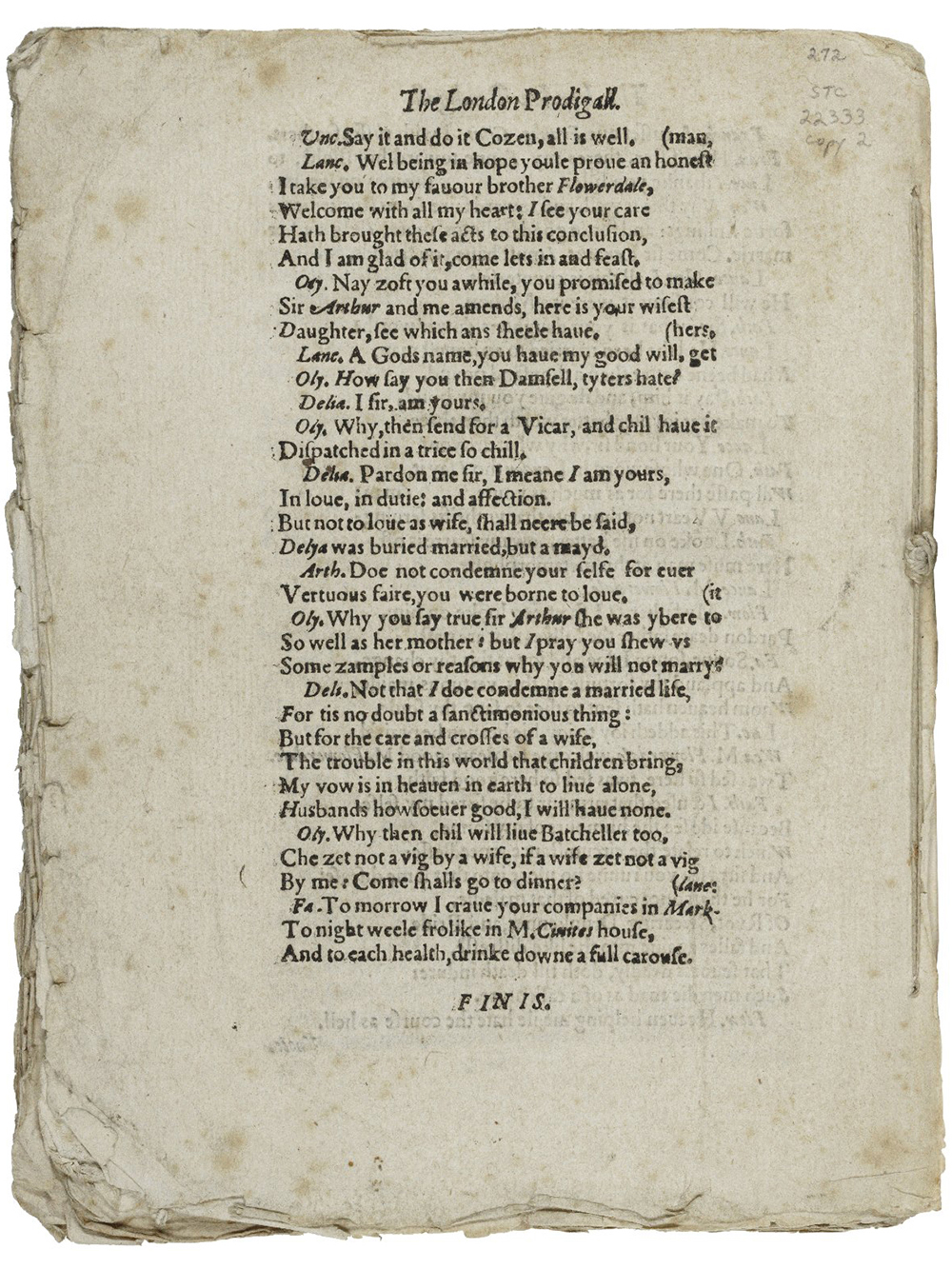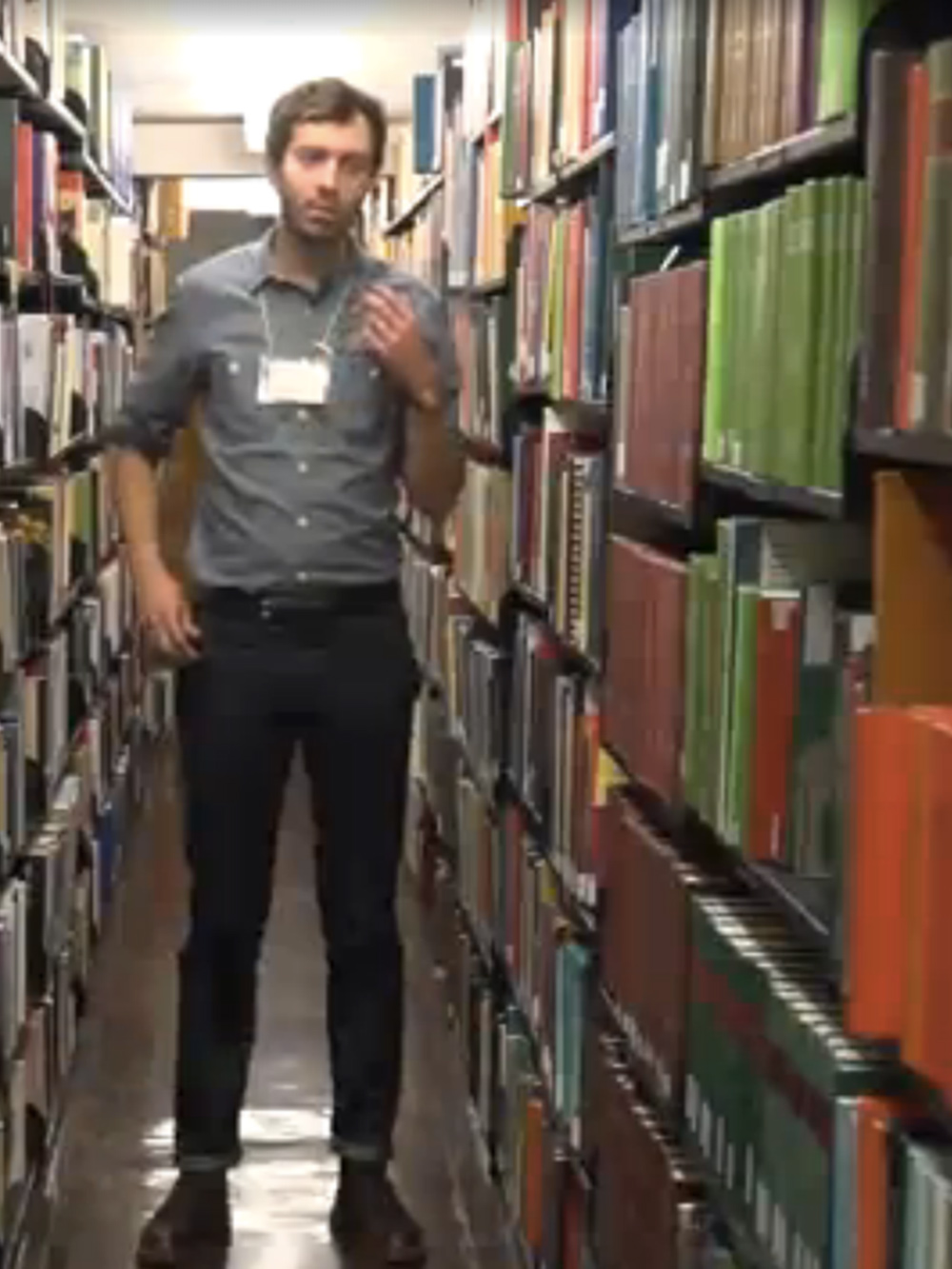“Shakespeare, The Book” will be held at Trinity University in San Antonio on Friday, September 30th. It will meet in the Special Collections space in Trinity’s Coates Library from 1:00–5:00pm and has been made possible by the support of The Andrew W. Mellon Fellowship of Scholars in Critical Bibliography at Rare Book School and by Trinity University.
As the apposition in the title hopefully hints, this symposium is committed to the central claim that Shakespeare, as we identify and teach him today, has been fundamentally shaped by the book trade and its customers. Print publishers and retail booksellers have marketed and sold Shakespeare’s writing, printers have undertaken the physical and intellectual labor of transforming manuscripts into print forms that are recognizable as books, and readers have been left after all of this to buy, engage with, and preserve—or ignore and discard—the editions that have been made available to them. Individuals connected to the early theater industry in London appear to have supplied manuscripts to begin this process, as well. So, while it is true that William Shakespeare was the the one who died 400 years ago, “Shakespeare, The Book” hopes instead to mark this anniversary year by directing our attention to agents that have been responsible, from the beginning, for shepherding his name and works into the English canon. It hopes to mark the anniversary by reminding us that, to the extent that Shakespeare has been constituted by the books that bear his name, he has never, in fact, been dead.
Please follow and join the conversation on Twitter at #shaxbook.
Friday, September 30th
1:00–3:00pm
Opening Remarks: Aaron T. Pratt (Trinity)
Chair: Andrew Kraebel (Trinity)
Alan B. Farmer (Ohio State), “Who Published Plays?: Printers and Booksellers, from Thomas Alchorn to Robert Young, from Leadenhall to Westminster Hall”
Tara L. Lyons (Illinois State), “How and Why Plays were Collected in Early Modern England”
Zachary Lesser (U Penn), “The Pavier Quartos: New Evidence and the Question of Evidence”
Aaron T. Pratt (Trinity), “‘Quod auctor’: Rethinking the History of Dramatic Authorship in Print”
3:30–5:00pm
Chair: Willis Salomon (Trinity University)
Adam G. Hooks (Iowa), “Breaking Bard”
Claire M. L. Bourne (Penn State) “‘Enter to the Battell’: Early Modern Playbook Typography & the End of the Scene”
Sarah Neville (Ohio State), “Verse vs. Prose: How Pistol Shoots Holes in Editorial Rationale”
5:00–6:00pm
Reception


